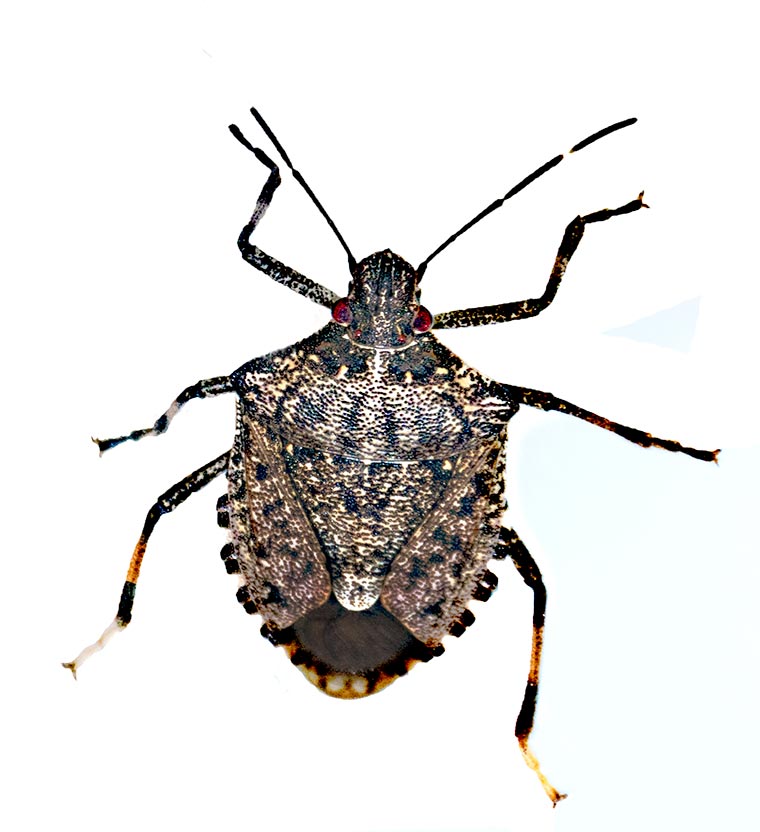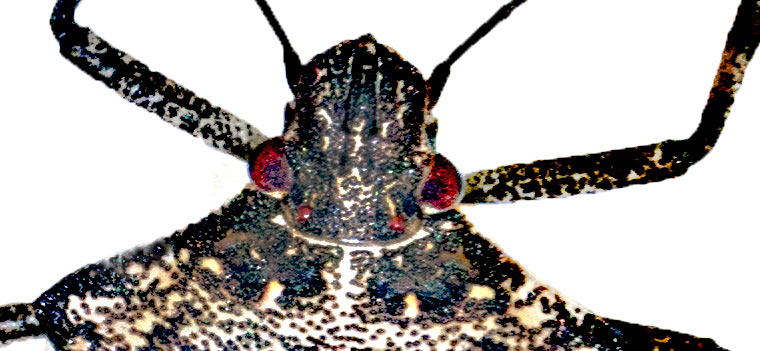In December, during our visit to Indiana, lots of people were complaining about an invasion of stinkbugs. They were crawling all over the place. If you squashed one, a very unpleasant odor would greet you. The bugs in question are Brown Marmorated Stinkbugs (Halyomorpha halys). Like many creatures that achieve unusually large populations and become pests, this species is not native to the U.S. Apparently, they were introduced into Allentown, PA in the 1990s from Asia, where they are native in China, Japan, and Korea. They have done very well in the U.S. and have achieved a wide range (they now occur in 42 states) in the absence of their natural enemies.DNA sequencing studies indicate that all the U.S. stinkbugs came from a single introduction from near Beijing, China.
This specimen appears to have two small red mite larvae hitchhiking along just behind its eyes.
One response to control these alien stinkbug populations would be to introduce some creature that normally preys on them in Asia. One such creature is a tiny 2 mm long wasp that lays its eggs inside the eggs of Brown Marmorated Stinkbugs. The wasp larvae then eat the stinkbug eggs. These wasps are highly specialized and only prey on Brown Marmorated Stinkbug eggs. This has to be carefully checked, however. We don’t want to introduce the wasps if they will also attack the eggs of other stinkbugs, some of which are beneficial.
Incidentally, marmorated means “like marble” and refers to the color pattern of these insects.


